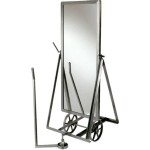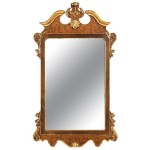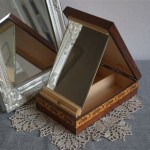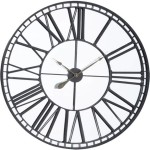How To Hang a Large Bathroom Mirror
Hanging a large bathroom mirror requires careful planning and execution to ensure both safety and aesthetic appeal. This process involves several key steps, from selecting the right hardware to properly securing the mirror to the wall.
Assessment and Preparation: Begin by accurately measuring the mirror's dimensions and weight. This information is crucial for choosing appropriate hanging hardware and ensuring the wall can support the mirror's weight. Inspect the wall's material, whether drywall, tile, or concrete, to select the correct anchors and fasteners. Mark the desired mirror placement on the wall using a level and pencil, creating a horizontal line level with the top edge of the mirror and vertical lines marking the sides.
Choosing the Right Hardware: The weight and size of the mirror dictate the type of hardware required. For heavier mirrors, consider using J-clips or Z-clips, along with heavy-duty wall anchors. These clips distribute the weight evenly and offer a secure hold. Alternatively, French cleats offer a robust solution by interlocking two pieces, one attached to the wall and the other to the mirror. Wire hangers are generally not recommended for large, heavy mirrors due to the risk of slippage or failure. Consult the manufacturer's recommendations and the hardware packaging for weight capacity guidelines.
Wall Anchor Selection: Choosing the appropriate wall anchor is critical for stability. Toggle bolts are ideal for hollow walls, offering a strong grip by expanding behind the wall surface. Molly bolts are another option for hollow walls, providing a firm anchor point. For concrete or brick walls, masonry anchors or concrete screws are necessary. Ensure the anchors are rated to support the weight of the mirror with a significant safety margin.
Installation Process for J-clips or Z-clips: After marking the mirror's placement, locate the stud positions in the wall using a stud finder. If possible, install the clips directly into studs for maximum support. If studs aren't located where needed, use appropriate wall anchors. Attach the clips to the wall at the marked positions, ensuring they are level and evenly spaced. Carefully lift the mirror and position it onto the installed clips. Most clips have a locking mechanism to secure the mirror in place. Check for stability by gently applying pressure to different points on the mirror surface.
Installation Process for French Cleats: Attach one section of the French cleat to the wall, ensuring it is level. Use appropriate anchors for the wall type. Attach the mating cleat to the back of the mirror, ensuring it aligns with the wall-mounted cleat. Carefully lift the mirror and engage the two cleats. The interlocking design of the French cleat system provides a secure and stable mounting solution.
Mirror Adhesive (Optional): For added security, especially in high-humidity environments, consider using mirror adhesive in conjunction with mechanical fasteners. Apply the adhesive to the back of the mirror in vertical lines or a zig-zag pattern before hanging it on the chosen hardware. Follow the adhesive manufacturer’s instructions for proper application and curing times. This extra measure helps prevent the mirror from shifting or vibrating.
Safety Precautions: Always wear appropriate safety gear, including gloves and eye protection, during the installation process. Use a sturdy ladder or step stool to reach higher areas safely. If the mirror is exceptionally heavy or awkward to handle, enlist the help of another person to avoid accidents. Never lift a heavy mirror alone. Ensure the working area is clear of obstructions and potential hazards.
Dealing with Uneven Walls: Minor wall imperfections can be accommodated using shims placed behind the mirror or between the clips and the wall. This ensures the mirror hangs flush against the wall and prevents stress on the mirror or hardware. Use thin, durable shims and adjust them as needed to achieve a level and even installation.
Post-Installation Check: After hanging the mirror, thoroughly inspect the installation to ensure it is secure and stable. Gently push on the mirror surface at various points to confirm it doesn't move or wobble. Verify that the mirror hangs level and is aligned correctly with the marked placement. Check again after 24 hours to ensure the adhesive, if used, has fully cured and the mirror remains securely attached.
Specific Considerations for Tiled Walls: When installing a mirror on a tiled wall, it is crucial to avoid drilling directly into the tiles, as this can cause cracking. Instead, aim for the grout lines between the tiles, using a carbide-tipped drill bit specifically designed for tile and grout. Alternatively, consider removing a tile and installing a backing board for added support, then reinstalling the tile around the mirror. Use appropriate anchors for the wall material behind the tiles.

How To Install A Mirror Without Frame Merrypad

How To Hang A Heavy Mirror Diy Family Handyman

How To Frame A Mirror

Easy Diy Tutorial Adding Trim Around A Giant Mirror For Ers

How To Hang A Hanging Mirror Without Accompanying Hardware

Mirror Frame Diy How To Update A Basic Bathroom Our Faux Farmhouse

How To Frame Out That Builder Basic Bathroom Mirror For 20 Or Less

Diy Bathroom Mirror Frame Without Removing Clips Her Happy Home

How To Hang A Large Or Heavy Mirror
:strip_icc()/DesireeBurnsInteriors1-f76d25cad90041c88fbae4a7dc10aab4.jpg?strip=all)
2 Simple Ways To Hang A Frameless Mirror








